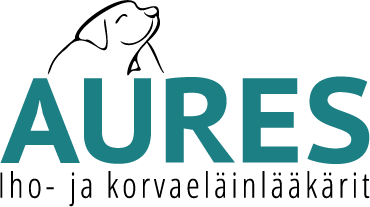Ear flush
An ear flush with video-otoscopy if often needed as part of the therapy when a pet has prolonged ear problems.
Prolonged or intense ear problems may need to be treated with an ear flush using a video otoscope while the pet is under anesthesia. This treatment may be useful also if the ears can not be properly cleaned at home, if the ear disharge consists of pus or if middle ear inflammation is suspected. Often prolonged ear inflammations may lead to injuries to the ear drum. This may lead to the inflammation moving on from the ear canal to the middle ear.
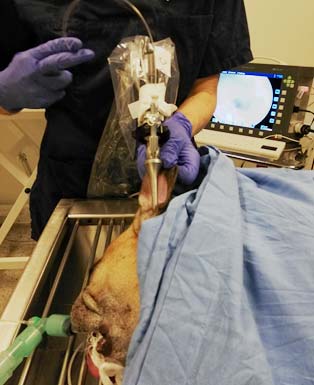
This dog is having its ears flushed under anesthesia and a video otoscope is being used.
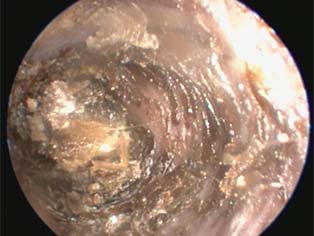
Debris accumulated in the ears is a sign of ear disease. An ear flush with video otoscopy is needed if the pet has had symtoms for a long time.
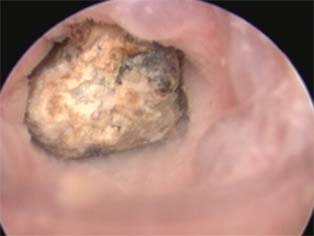
Impacted debris in the ear channel might be impossible to get rid of at home.
Treating an ear inflammation
For a successful outcome of the ear treatment it is very important to get rid of the discharge in the ear channels and middle ears. A dirty ear channel makes it harder for drugs to reach the inflammated areas and makes them less effective. When doing an ear flush using video otoscopy, it is possible to clean the ear canals (and if needed also the middle ears) effectively.
In the video otoscope there is a enlarging camera and an effective light source. It is possible to insert instruments via the video otoscope. The view of the ear is much better than with an ordinary otoscope. It is possible to take biopsies or remove tumours if needed.
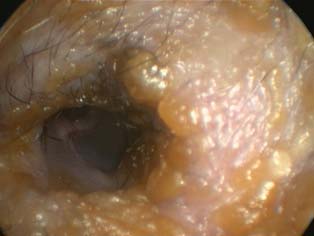
A prolonged ear inflammation may lead to damage to the ear drum. In this picture taken with a video otoscope you can see a normal ear drum.
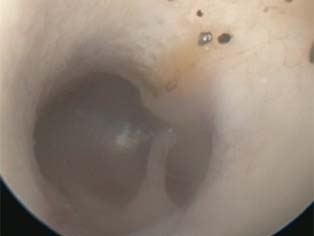
A healthy ear is clean and doesn’t need regular cleaning. In the picture you can see a cat’s ear channel and a normal ear drum.
